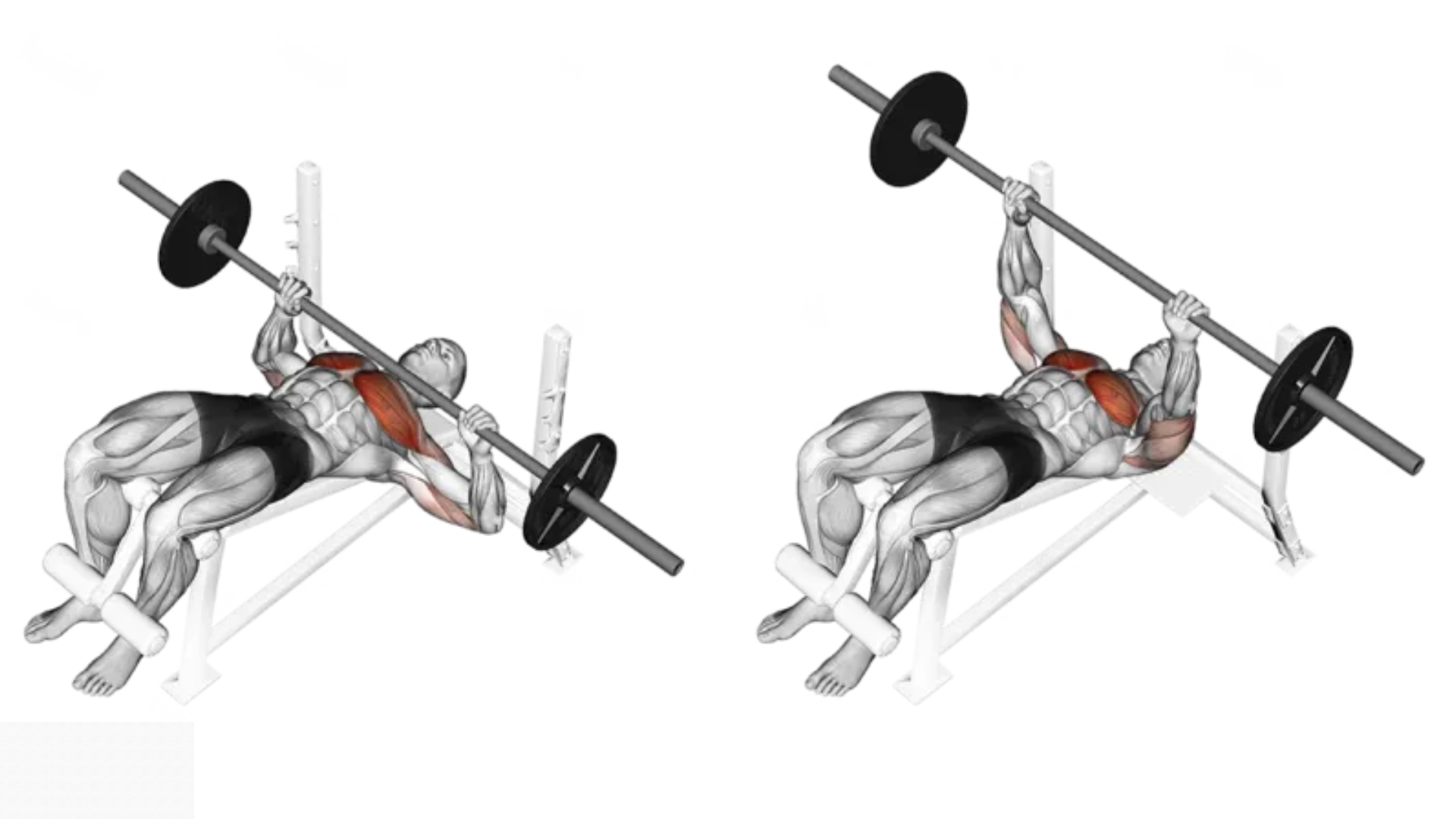
What is the Decline Barbell Bench Press?
Simply put, the Decline Barbell Bench Press is a variation of the standard bench press but performed at a downward angle. When you set the bench at a decline (usually 15-30 degrees), it shifts the focus onto the lower pectoral muscles, which are often neglected in standard workouts. The angle also allows for a better range of motion and can alleviate shoulder strain, making it an excellent addition to your chest workout.
How to Properly Perform the Decline Barbell Bench Press
Set Up the Bench
Start by adjusting your bench to a decline angle between 15-30 degrees. Too steep, and you risk targeting the wrong muscles; too shallow, and you may not fully engage the lower chest.
Secure Your Position
Lie back on the bench with your feet firmly placed under the footpads or flat on the ground (depending on the bench setup). Your back and hips should remain flat against the bench to maintain stability.
Grip the Barbell
Take a shoulder-width grip on the barbell. Your grip can slightly vary depending on comfort, but a standard grip works best for engaging the chest muscles.
Unrack the Barbell
Lift the bar off the rack and bring it directly above your chest. Your arms should be fully extended but not locked out. This is your starting position.
Lower the Bar
Slowly lower the barbell towards your lower chest, keeping your elbows at a 45-degree angle. The bar should come down in a controlled manner to just above the bottom of your pecs.
Press the Weight Back Up
Push the barbell back up in a straight line, exhaling as you press. Your goal is to fully extend your arms without locking out your elbows. This ensures constant tension on the chest.
Repeat
Aim for 3-4 sets of 8-12 reps. Adjust the weight as needed to ensure you’re challenging yourself but still maintaining proper form.
Benefits of the Decline Barbell Bench Press
Targets the Lower Chest
The decline angle puts more emphasis on the lower pectoral muscles, which can be tricky to hit with standard presses. A well-developed lower chest gives your upper body a more complete, balanced appearance.
Increases Chest Strength
Because the decline bench press activates a different part of your chest, it complements other chest exercises like flat and incline presses. Together, these exercises ensure you’re working the entire pectoral region, which translates to greater overall chest strength.
Reduces Shoulder Strain
One of the biggest advantages of the decline press is that it reduces stress on your shoulders. If you suffer from shoulder pain or discomfort during flat or incline presses, the decline angle can provide relief while still allowing you to work your chest.
Enhances Upper Body Stability
The movement requires core stabilization, particularly when you’re controlling the bar as you lower it. Over time, this will improve your overall upper body stability, which can benefit your performance in other exercises like squats and deadlifts.
Prevents Muscle Imbalances
If your chest day primarily consists of flat and incline bench presses, you may develop imbalances where your upper chest is stronger than your lower chest. By incorporating decline presses, you ensure a more evenly developed chest.
It’s Here Preacher Curl Barbell How to Do It and what are the Benefits
FAQs
1. Is the decline bench press better than the flat bench press?
Neither is better; both target different areas of the chest. The decline press focuses more on the lower chest, while the flat bench press hits the overall chest.
2. Should I use a spotter?
Absolutely! Especially if you’re lifting heavy, a spotter can help ensure safety during your workout.
3. How often should I do the decline bench press?
Incorporating it into your chest routine once or twice a week is usually sufficient. You don’t need to do it every session.

